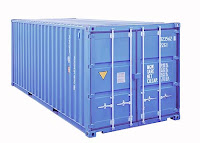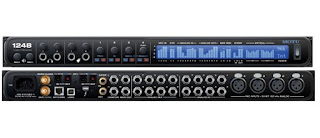The song was chosen as a single more through the process of elimination, since it was the only one on the album that lent itself to a radio edit. Ironically, the band never considered the song hit material and were always surprised at the notoriety it brought them. Here's an excerpt from the upcoming Deconstructed Hits: Classic Rock Volume 2 that provides an inside look at the song.
The Song
“Radar Love” has a lot of sections, including two intros and two bridges, as well as an elongated last verse and chorus. This accounts for the 6:22 album length, but it also enables some easy editing to bring it down to the 3:41 running time that most of us are familiar with on the radio.
The song doesn’t really have an instrumental hook other than the driving beat, but the melody is strong as are the lyrics, which take the point of view of an automobile driver rushing to see his lover. During the drive he communicates with her via telepathy as he listens to a rather obscure Brenda Lee hit from 1963 called “Coming On Strong.” The form looks like this:
intro | intro 2 | verse | B section | chorus | interlude | verse | B section | chorus | bridge | bridge 2 | intro 2 | verse | B section | chorus | outro
The Arrangement
For the most part, the arrangement for “Radar Love” is generally sparse but very dynamic. The song begins with an 8 bar intro that gives way to a second intro built around the galloping snare drum play, then the main bass riff. A tambourine also enters on the right side that continues through the verse.
The verse begins with the vocal punctuated by a guitar on the left side that plays in between the phrases. Background vocals enter on right during the B section, which leads into the chorus, where the vocal is doubled, the left guitar is doubled with a synth and a lead guitar plays fills on the right.
On the second verse the left guitar plays a different riff but in a higher register, with a lower vocal added during the last two phrases. The second B section and chorus are identical to the first.
On the first bridge there’s a new synth bass line and drum pattern, and it begins with a high synth line that leads to a new guitar entering on right side. As the bridge progresses, the lead guitar enters at the end of the phrases on the left. This bridge then builds with a synth to accents at the end
Bridge 2 begins with repeated tom pattern, with the bass and guitar playing the same symphonic line (the guitar panned to the left), with the synthesizer building on the right.
The last verse begins with 8 bars of the bass and drum intro that increases in intensity as it builds to the vocal verse. On the last verse two guitars panned left and right play fills in octaves. This verse is twice as long, although the B section is the same length as all other B sections of the song, and the chorus is also twice as long, with the synth entering on the second one.
The song ends with the bridge bass and drum riff, as the guitars and synth build to a hard ending.
Arrangement Elements
The Foundation: bass and drums
The Rhythm: tambourine
The Pad: synth in chorus
The Lead: lead vocal
The Fills: background vocals, guitar fills
The Sound
“Radar Love” is engineered very well, with excellent bass and drum sounds, and makes great use of panning that you just don’t hear today. The song opens with a guitar on the left that’s balanced out with a reverb on the right. This effect is never heard in the song again.
During the first and second verses, the guitar answers the lead vocal on the left side, and is then balanced out by background harmony vocals on the right during the bridge. During the bridge the left guitar is doubled with a synth on the right. On the third verse, there’s an answer guitar on each side but they’re playing in different registers.
There isn’t much in the way of effects on the song, as it falls to a delayed reverb that’s used mostly on the vocal with a touch on the snare as well. The guitars use either a short reverb, or more than likely, were recorded with a lot of room ambience to set them apart from the rest of the track.
LISTEN UP
1. To the intro guitar with the dry sound on the left and reverb on the right
2. To the off-mic vocal during the second intro
3. To the lead guitar sneak in at the end of the phrases on the bridge
4. To the delayed reverb on the vocal and short reverb on the guitars
The Production
Here’s another example of a band producing themselves successfully, and once again a record that was made to be played live. There’s some sweetening, especially with the synthesizers on the bridge, but mostly the parts are laid down just like they were performed on stage.
Contrast that to most of the songs today that are heavily produced, where parts are doubled and tripled to make them sound bigger, and multiple layers of effects are added. The simplicity of production of “Radar Love” made it a hit and has kept it on the radio 40+ years later. Maybe we should use this as an example of how production should be done."
You can read more about how the hit songs that you love were created in Deconstructed Hits.







